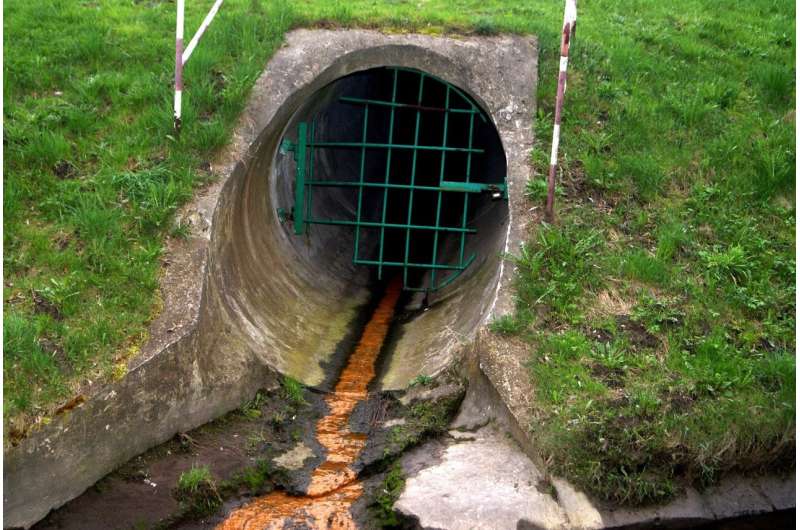This article has been reviewed according to Science X's editorial process and policies. Editors have highlighted the following attributes while ensuring the content's credibility:
fact-checked
trusted source
proofread
Cloud-based AI helps to reduce river pollution

A cloud-based artificial intelligence (AI) system designed to detect blockages in sewers has shown an almost 90% accuracy rate in a recent trial. Early identification of sewer blockages is essential to reduce pollution incidents affecting our rivers.
The project is a collaboration between the University of Sheffield, Yorkshire Water, and tech company Siemens, and is a part of the "Pollution Incident Reduction Plan" which focuses on early intervention to reduce pollution incidents by 50% by 2025.
Sewers have "combined sewer overflows" (CSOs) which let excess water spill out into a nearby water body when the pipes are full due to heavy rainfall, preventing downstream flooding. These spillages can also be caused by unexpected restrictions in the pipe, such as blockages, resulting in unnecessary pollution of our rivers and watercourses.
Sensors monitor water depth in the CSOs, and other parts of the sewer network, allowing real time understanding of performance. The quantity of sensors makes manual analysis infeasible, hence an automated system is needed.
The technique was originally developed by the University of Sheffield and Yorkshire Water to improve on their previous analytics technique. This project with Siemens has further developed the tool into a commercial, cloud-based solution—the Siemens Water (SIWA) Blockage Predictor.
The AI based solution predicts water depths using rainfall data and compares these to the measured depth using a fuzzy logic (FL) algorithm. The FL alerts the water utility of any unexpectedly high depths which could lead to a pollution incident. The aim is to identify developing blockages so that they can be removed before pollution occurs.
A new journal article presents an assessment of the SIWA Blockage Predictor for 50 CSOs over a two year "historic" period and a six month "live" period. The article also compares performance to the previous analytics solution.
Across the full dataset, 88.4% of confirmed issues were correctly identified, compared to 26.6% for the previous solution. The article, titled "Cloud-Based Artificial Intelligence Analytics to Assess Combined Sewer Overflow Performance," is published in the Journal of Water Resources Planning and Management.
Dr. Will Shepherd, principal investigator from the University of Sheffield's Department of Civil and Structural Engineering, said, "Our sewer networks were not designed to convey heavy rainfall to treatment, CSOs provide an essential relief valve when rain would otherwise cause flooding further down the network. Our focus here is on making them as environmentally friendly as possible by identifying blockages which would cause premature spills and hence pollution of rivers and watercourses."
Professor Joby Boxall, professor of water infrastructure engineering in the University of Sheffield's Department Civil and Structural Engineering, said, "The synergies of the collaborative partnership approach to this research was vital to success. It was important that the different needs and ambitions of each partner was mutually recognized and respected from the outset and that we built and maintained a high level of trust."
Dr. Stephen Mounce, director of Mounce HydroSmart said, "This project has demonstrated how the application of AI and data analytics can progress from research prototypes in early stage projects to a mature, generic solution deployed on a cloud-based platform. It has been exciting to see the real world deployment of the system to over 2,000 assets at Yorkshire Water."
Dr. John Gaffney, product owner SIWA Blockage Predictor, said, "This collaboration has been a fantastic example of how a technology company can take high Technology Readiness Level (TRL) research from a University, productise it, and prove value via peer reviewed science to an end user. The fact the product is serving such an important purpose in protecting watercourses is particularly rewarding."
More information: Will Shepherd et al, Cloud-Based Artificial Intelligence Analytics to Assess Combined Sewer Overflow Performance, Journal of Water Resources Planning and Management (2023). DOI: 10.1061/JWRMD5.WRENG-5859
Provided by University of Sheffield





















